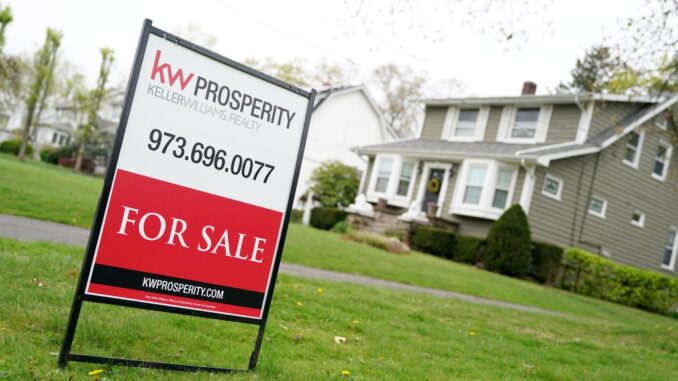
Ahead of the 2024 presidential election, home prices and housing affordability are emerging as hot issues in the swing states that will decide the election.
While the housing crisis is an issue across the country, an analysis of Realtor.com® affordability score data shows distinct trends separating red states, blue states, and the seven key swing states: Arizona, Georgia, Michigan, Nevada, North Carolina, Pennsylvania, and Wisconsin.
On average, red states are more affordable than the US as a whole, and blue states are less affordable.
The swing state average sits in the middle, slightly more affordable than the national average.
Those relative trends have held even as affordability declined across the board.
Nationwide, home affordability has declined sharply since 2021 in every state, as higher mortgage rates and stubbornly high prices pushed ownership out of reach for many prospective homebuyers.
But a breakdown of how affordability differs across the election map, and in the seven key battleground states, sheds light on how voters might respond to the candidates’ pitches on this key issue.
President Joe Biden, a Democrat, addressed the housing crisis in his State of the Union this spring, proposing tax credits for some buyers and sellers, and measures to boost construction.
His Republican opponent, Donald Trump, took the opposite tack, accusing Biden of waging an “attack on the suburban lifestyle” that would reduce home values.
Our affordability data shows that, in a sense, the two candidates are speaking to two different worlds of voters.
But in November, what will matter most is how they are received by voters in the toss-up states that will decide the election.
“Generally, states that vote Republican are more affordable than the US as a whole, and states that vote Democrat are less affordable,” says Realtor.com senior economic data analyst Hannah Jones. “Swing states tend to be more affordable than the US average, though less affordable than Republican states, on average. This dynamic remained intact as affordability worsened across all states and the US between 2021 and today.”
Home Affordability Scores by Likely 2024 Vote
State-level affordability scores from Realtor.com are seen as averages by the states’ likely voting preference for president in 2024, alongside the US national score.
A higher score indicates a more affordable housing market.
How we measured home affordability across the political spectrum
The Realtor.com affordability score is an index that ranges from 0 to 2 and reflects the share of home listings in a market that are affordable to those at various local income levels.
Generally, a score of 1 or higher indicates an affordable market, where a family making the median local income could afford to buy at least half of the homes for sale under current mortgage rates.
In March, the national average affordability score sat at 0.65. Iowa had the highest state score at 0.93, but no state scored above 1, indicating home affordability is a challenge across the country.
Still, some states are more affordable (or perhaps less unaffordable) than others. Using the Cook Political Report as a guide, we determined red and blue states based on the states rated “solid” or “likely” to vote for the Republican or Democratic presidential candidate in 2024.
The 24 red states had an average home affordability score of 0.70 in March, while the 19 blue states plus Washington, DC, averaged 0.59.
The remaining seven swing states had an average affordability score of 0.66, falling in the middle of the political spectrum and just above the national average.
The relative dynamic separating the red, blue, and swing states has held at least since 2016, even as affordability has worsened across all states and the US since 2021.
“Housing affordability crept higher across the US from 2018 to 2021 before tumbling through 2022 and into 2023 as high home prices and climbing mortgage rates accelerated faster than wage growth,” says Jones.
“All states across the US experienced this deterioration in affordability. Mortgage rates and home prices have hovered around the same level over the last year, which means that nationally, affordability has not gotten significantly worse, but it has not improved much either,” she adds.
It’s important to note that the Realtor.com affordability index reflects only home prices, and not rents.
Rent affordability is also a challenge nationwide, with nearly half of all renters in the nation spending more than 30% of their income and a quarter spending more than 50% on rent each month, according to US Census data.
However, it’s unclear whether that issue would break down along similar political lines.
State Affordability Rankings
Affordability RankGeographic AreaLikely 2024 VoteMarch Affordability ScoreMedian List Price (March)Median Household Income (2022)United
What’s behind the differences?
Census data shows that, on average, states that vote Republican tend to be more rural.
That lower average population density could be one of the factors mitigating the housing crisis in those states.
Real Estate – Latest NYC, US & Celebrity News



